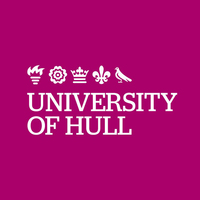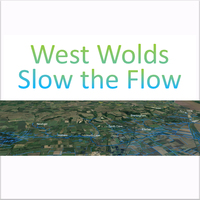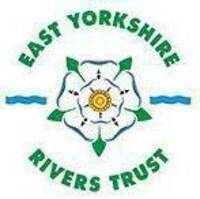


Local Sponsors
-
Energy and Environment Institute - Hull University
Hull. HU6 7RX
The Energy and Environment Institute was established at the University of Hull in late 2016, with the vision to be an internationally leading centre for research that focuses on global sustainability challenges. It brings together leading interdisciplinary academics to tackle global issues surrounding climate change and its consequences on livelihoods. The Institute has three primary goals: to research and discover; to innovate and deliver impact; and to act as a regional anchor and beacon for world leading research and knowledge exchange.
-
West Wolds Slow the Flow
2B Landscape Consultancy Ltd. 12 Everthorpe Lane North Cave Brough, Hull HU15 2LF
What is West Wolds Slow the Flow? West Wolds Slow the Flow is an informal partnership, of like-minded individuals and organisations, which aims to reduce flooding in the West Wolds villages and surrounding areas using nature-based solutions. Geographically, we cover the parishes of Newbald, Hotham, North Cave, South Cave, Ellerker and Brantingham, which roughly corresponds with the 'Mill Beck Catchment'. To find out more visit our website...
-
Mires Beck Nursery
Low Mill Lane, North Cave, East Yorkshire, HU15 2NR
Nestled in the rural East Yorkshire Wolds village of North Cave, Mires Beck Nursery sits alongside a beautiful beck and is situated not far from the Wetlands nature reserve. We are open all year as a public nursery, special needs day care provider and registered charity. We value this special place, the service it provides our community and how many lives it has touched. We have active Facebook, Instagram, Twitter, and TikTok social media sites which keep you informed on all activities at the nursery. We would love to tell you about everything that happens at Mires Beck Nursery. Find out all about the work we do at Mires Beck by clicking the website link below...
-
The East Yorkshire Rivers Trust
1 Riverside. Driffield YO25 6PA
The East Yorkshire Rivers Trust protects and enhances riverine habitat for the benefit of wildlife and people through education and conservation projects. The Chalk Wolds of East Yorkshire are an important source of highly prized spring fed rivers and streams. These watercourses make up a river system that forms the most northerly chalk rivers in Europe. The major rivers are designated Sites of Special Scientific Interest (SSSI.) This is an indication of the importance of these streams. Chalk rivers and their associated landscapes are a unique and irreplaceable part of our heritage. The East Yorkshire chalk rivers are important for wildlife including the rare Otter and Water Vole. The chalk rivers are under increasing threat from water abstraction, land drainage, agricultural run-off, flood defences and urban development. On our site, you can find out what makes the Chalk Wolds special, the problems our rivers are facing and how the The East Yorkshire Rivers Trust is working to conserve them.





